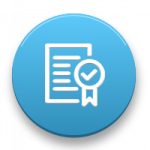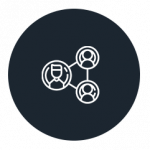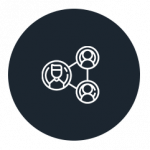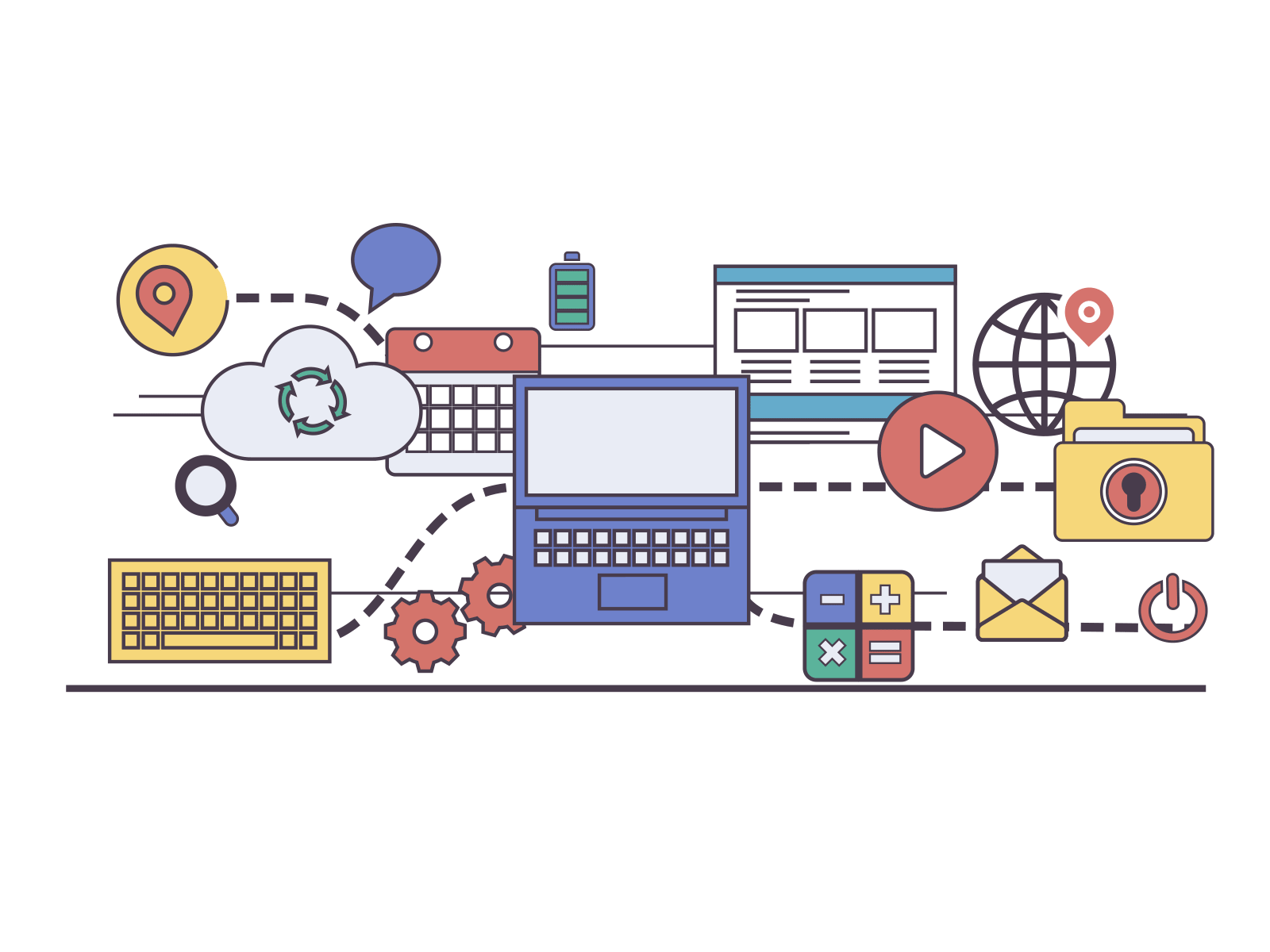Cloud Computing Overview
Who We Are?
We are pioneers of a new and powerful era of education. At Chools, we strive to bring you the best and make you employable.
With carefully curated content and 24×7 support at your fingertips, you will never have to look elsewhere again.
We are the best trainers in the latest, coveted technologies across the globe, and we can help you carve your career. Come learn with us and give yourself the gift of knowledge.

About the Specialization
The Cloud Computing Specialization takes you on a tour through cloud computing systems. We start in in the middle layer with Cloud Computing Concepts covering core distributed systems concepts used inside clouds, move to the upper layer of Cloud Applications and finally to the lower layer of Cloud Networking. We conclude with a project that allows you to apply the skills you’ve learned throughout the courses.

Earn a certificate

Flexible Deadlines

Virtual Training

Level-Intermediary

6 months @ 5 hours/week (Approx.)
There are 6 Courses in this Specialization
Course 1 – Cloud Computing concepts part 1
Cloud computing systems today, whether open-source or used inside companies, are built using a common set of core techniques, algorithms, and design philosophies – all centered around distributed systems. Learn about such fundamental distributed computing “concepts” for cloud computing.
Some of these concepts include: clouds, MapReduce, key-value/NoSQL stores, classical distributed algorithms, widely-used distributed algorithms, scalability, trending areas, and much, much more! Know how these systems work from the inside out. Get your hands dirty using these concepts with provided homework exercises. In the programming assignments, implement some of these concepts in template code (programs) provided in the C++ programming language. Prior experience with C++ is required. The course also features interviews with leading researchers and managers, from both industry and academia.
Course 2 – Cloud Computing concepts part 2
This course builds on the material covered in the Cloud Computing Concepts, Part 1 course.
Course 3 – Cloud Computing Applications part 1 - Cloud systems and infrastructure
Welcome to the Cloud Computing Applications course, the first part of a two-course series designed to give you a comprehensive view on the world of Cloud Computing and Big Data!
We start the first week by introducing some major concepts in cloud computing, the economics foundations of it and we introduce the concept of big data. We also cover the concept of software defined architectures, and how virtualization results in cloud infrastructure and how cloud service providers organize their offerings. In week two, we cover virtualization and containers with deeper focus, including lectures on Docker, JVM and Kubernates. We finish up week two by comparing the infrastructure as a service offering by the big three: Amazon, Google and Microsoft. Week three moves to higher level of cloud offering, including platform as a service, mobile backend as a service and even serverless architectures. We also talk about some of the cloud middleware technologies that are fundamental to cloud based applications such as RPC and REST, JSON and load balancing. Week three also covers metal as a service (MaaS), where physical machines are provisioned in a cloud environment. Week four introduces higher level cloud services with special focus on cloud storage services. We introduce Hive, HDFS and Ceph as pure Big Data Storage and file systems, and move on to cloud object storage systems, virtual hard drives and virtual archival storage options. As discussion on Dropbox cloud solution wraps up week 4 and the course.
Course 4 – Cloud Computing Applications part 2 - Big Data and applications in the Cloud
In this course we continue Cloud Computing Applications by exploring how the Cloud opens up data analytics of huge volumes of data that are static or streamed at high velocity and represent an enormous variety of information. Cloud applications and data analytics represent a disruptive change in the ways that society is informed by, and uses information. We start the first week by introducing some major systems for data analysis including Spark and the major frameworks and distributions of analytics applications including Hortonworks, Cloudera, and MapR. By the middle of week one we introduce the HDFS distributed and robust file system that is used in many applications like Hadoop and finish week one by exploring the powerful MapReduce programming model and how distributed operating systems like YARN and Mesos support a flexible and scalable environment for Big Data analytics. In week two, our course introduces large scale data storage and the difficulties and problems of consensus in enormous stores that use quantities of processors, memories and disks. We discuss eventual consistency, ACID, and BASE and the consensus algorithms used in data centers including Paxos and Zookeeper. Our course presents Distributed Key-Value Stores and in memory databases like Redis used in data centers for performance. Next we present NOSQL Databases. We visit HBase, the scalable, low latency database that supports database operations in applications that use Hadoop. Then again we show how Spark SQL can program SQL queries on huge data. We finish up week two with a presentation on Distributed Publish/Subscribe systems using Kafka, a distributed log messaging system that is finding wide use in connecting Big Data and streaming applications together to form complex systems. Week three moves to fast data real-time streaming and introduces Storm technology that is used widely in industries such as Yahoo. We continue with Spark Streaming, Lambda and Kappa architectures, and a presentation of the Streaming Ecosystem. Week four focuses on Graph Processing, Machine Learning, and Deep Learning. We introduce the ideas of graph processing and present Pregel, Giraph, and Spark GraphX. Then we move to machine learning with examples from Mahout and Spark. Kmeans, Naive Bayes, and fpm are given as examples. Spark ML and Mllib continue the theme of programmability and application construction. The last topic we cover in week four introduces Deep Learning technologies including Theano, Tensor Flow, CNTK, MXnet, and Caffe on Spark.
Course 5 – Cloud Networking
In the cloud networking course, we will see what the network needs to do to enable cloud computing. We will explore current practice by talking to leading industry experts, as well as looking into interesting new research that might shape the cloud network’s future.
This course will allow us to explore in-depth the challenges for cloud networking—how do we build a network infrastructure that provides the agility to deploy virtual networks on a shared infrastructure, that enables both efficient transfer of big data and low latency communication, and that enables applications to be federated across countries and continents? Examining how these objectives are met will set the stage for the rest of the course. This course places an emphasis on both operations and design rationale—i.e., how things work and why they were designed this way. We’re excited to start the course with you and take a look inside what has become the critical communications infrastructure for many applications today.
Course 6 – Cloud Computing Project
Note: You should complete all the other courses in this Specialization before beginning this course.
This six-week long Project course of the Cloud Computing Specialization will allow you to apply the learned theories and techniques for cloud computing from the previous courses in the Specialization, including Cloud Computing Concepts, Part 1, Cloud Computing Concepts, Part 2, Cloud Computing Applications, Part 1, Cloud Computing Concepts, Part 2, and Cloud Networking.
- Growing Industry: Cloud computing is a rapidly expanding industry, driven by the increasing adoption of cloud technologies by businesses of all sizes. This growth creates a constant demand for skilled professionals.
- Diverse Roles: The cloud computing ecosystem offers a wide range of job roles, including cloud architects, engineers, security specialists, data analysts, consultants, DevOps engineers, and solution architects, among others.
- Specialized Skills: Each job role within cloud computing requires specialized skills and expertise in areas such as cloud platforms (e.g., AWS, Azure, Google Cloud), infrastructure management, cybersecurity, data analytics, and automation.
- Continuous Innovation: Cloud technology is continuously evolving, with new services, features, and best practices emerging regularly. This dynamic environment fosters ongoing learning and professional development opportunities for individuals in the field.
- Global Reach: Cloud computing enables businesses to operate on a global scale, leading to job opportunities not only locally but also internationally. Remote work options are also common in the cloud computing industry, providing flexibility for professionals.
- Competitive Salaries: Due to the high demand for cloud computing skills and expertise, professionals in this field often command competitive salaries and benefits.
- Future Growth: As organizations increasingly rely on cloud solutions for digital transformation, the demand for cloud computing professionals is expected to continue growing in the coming years, offering long-term career prospects.
- Cross-Industry Application: Cloud computing is not limited to specific industries but is applicable across various sectors, including finance, healthcare, retail, manufacturing, and entertainment, among others. This broad applicability further expands job opportunities.
BENEFITS OF OUR TRAINING, FRAMEWORKS & TEMPLATES

Improve the growth & efficiency of your organization by leveraging Business & Consulting Toolkits created by ex-McKinsey, Deloitte & BCG Consultants

It cost us $500k+ to create all our Business & Consulting Toolkits.Get them for a fraction of this cost

It’s like hiring Management Consultants to create all the practical Frameworks, Tools & Templates required to get a competitive advantage

Get the job done quicker and never start from scratch again with our ready-made & fully editable Frameworks, Tools & Templates in PowerPoint & Excel

We have worked 20,000+ hours over the past 5 years to create the world’s best Business & Consulting trainings.

Improve your skills & capabilities and meet your professional goals by learning how the Fortune 100 and Global Consulting Firms do it.

Hiring top-tier Consultants for a management consulting project would cost you $300k+. A lot more expensive than purchasing our Toolkits.

Get free support and advice from our Chools Management Consultants.

Impress yours take holders and become your organization’s subject matter expert with world-class approaches to resolve common business problems.
Cloud Computing & Visualization
- Data Visualization Tools: Cloud computing platforms often provide services for data storage, processing, and analysis. Many of these platforms also offer integrations with data visualization tools. By leveraging cloud-based data visualization solutions, organizations can create interactive charts, graphs, and dashboards to explore and communicate insights derived from their data stored in the cloud.
- Scalability: Cloud computing enables organizations to scale their computing resources up or down based on demand. This scalability is crucial for handling large volumes of data required for visualization tasks. Whether it’s processing massive datasets or rendering complex visualizations, cloud infrastructure provides the necessary computational power and storage capacity to support visualization workflows effectively.
- Real-time Visualization: With the elasticity of cloud computing, organizations can perform real-time data processing and visualization. By leveraging cloud-based analytics and visualization services, businesses can monitor and visualize streaming data streams as they occur, enabling faster decision-making and response to changing conditions.
- Collaboration and Accessibility: Cloud computing facilitates collaboration and accessibility to visualization tools and resources. Since data and visualization assets are stored in the cloud, team members can access and collaborate on projects from anywhere with an internet connection. This accessibility promotes seamless collaboration among distributed teams and enables stakeholders to gain insights from visualizations regardless of their location.
- Cost Efficiency: Cloud computing offers cost-effective solutions for data visualization by providing pay-as-you-go pricing models and eliminating the need for upfront hardware investments. Organizations can leverage cloud-based visualization services without worrying about infrastructure maintenance or licensing costs, making it more affordable to deploy and scale visualization initiatives.
- Advanced Analytics: Cloud computing enables the integration of advanced analytics techniques, such as machine learning and artificial intelligence, into visualization workflows. By combining these technologies, organizations can uncover complex patterns and relationships in their data and generate more insightful visualizations to support decision-making processes.
Take your first step towards RESULT.

DURATION
- Number of per day hours: 2 hrs
- Number of Hours: 336 Hrs

ASSESSMENT METHODS
- Assessments: One Final Exam
- Case studies: Four
- Capstone Projects: Two Live Projects
- Class Assessments: 50

MODE OF DELIVERY
- Mode of Delivery: Hybrid
- Live Classes: Yes
- Recorded Sessions: Available for 12 months

CAREER SUPPORT
- Chools Industry mentorship: One-on-one mentorship with industry experts can provide personalized career advice and help Trainees develop the skills they need to succeed in the field.
- Chools Career counselling: Career counselling from Chools to help Trainees identify their strengths and interests and develop a plan for achieving their career goals.
- Chools Resume and cover letter review: Resume and cover letter review services from Chools can help Trainees create effective job application materials that highlight their skills and experience.
- Chools Interview preparation: Interview preparation services from Chools can help Trainees prepare for job interviews by providing tips on how to answer common interview questions and how to present themselves professionally.

Chools LMS Platform
World-class LMS –Online/Offline Mode with the Exam Portal. Dedicated CHATBOX for Trainee support.
1000+ Trainees in one single sessions in LMS.
Recorded sessions. Access to 10 Soft skills eLearning program to ace communication & Interview preparation.
Pre-Recorded sessions available.
Digital Library access throughout the course & 1 Year access Post Completion of the program.
